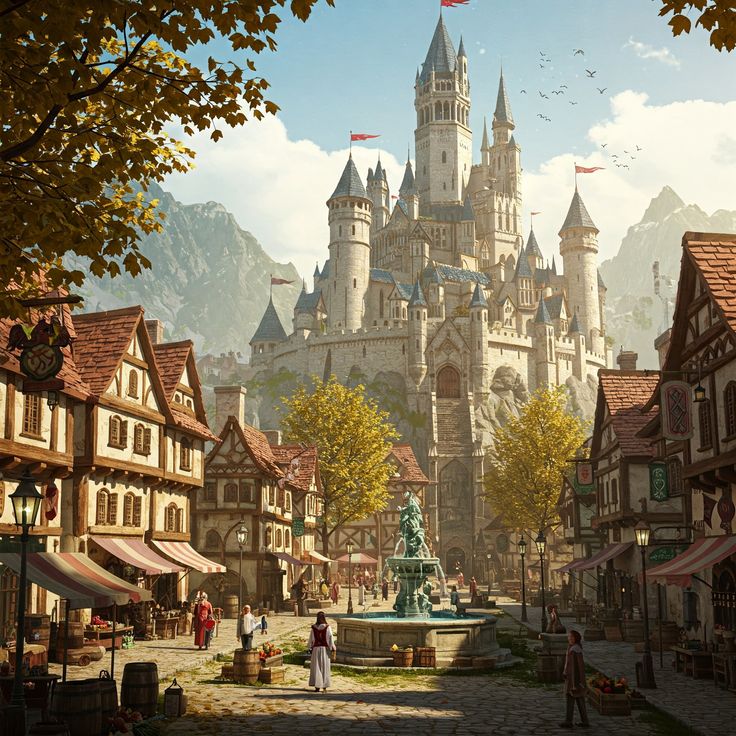Camelot
Demographics: The population of Camelot is diverse, with humans, Aasimar, elves, and other races coexisting within the kingdom. The human population makes up 30% of the population, while Aasimar and elves each account for 20%, and the remaining 20% is comprised of various other races. Interracial relationships are not uncommon, particularly between humans and Aasimar or elves. The kingdom is predominantly human, with Aasimar and elves holding significant influence due to their magical abilities and long lifespans, respectively.
Services & Infrastructure: Camelot boasts a well-developed infrastructure, with a variety of services catering to the needs of its diverse population. The city is home to numerous blacksmiths, alchemists, healers, temples, taverns, markets, libraries, schools, guilds, and government buildings. The quality of these services varies, but most are well-maintained and reflect the kingdom's prosperity. The city is well-lit, with advanced lanterns powered by magical energy. Sanitation is a priority, and the streets are kept clean. The kingdom's economy is robust, with a thriving market for magical artifacts and relics.
Governance & Politics: Camelot is a monarchy, ruled by King Arthur Pendragon and his knights of the round table. Merlin serves as the royal mage and advisor, using his magical prowess to guide the kingdom's policies and decisions. The political climate is generally stable, with the ruling class maintaining a firm grip on power. However, there is a growing tension between the kingdom's magical and non-magical inhabitants, with some non-magical citizens resenting the privileged status of those with magical abilities. Law enforcement is primarily handled by the knights of the round table, with a judicial system based on a combination of human and magical laws.
Purpose & Economy: Camelot was founded as a beacon of hope and unity in a world fraught with conflict and darkness. The kingdom's primary economic activities revolve around trade, both magical and mundane, as well as agriculture and craftsmanship. The kingdom's unique location, nestled between the human and elven realms, has allowed it to become a hub for commerce and diplomacy. The kingdom's wealth is distributed relatively evenly, with most citizens enjoying a comfortable standard of living.
Culture & History: Camelot's culture is a blend of human, Aasimar, and elven traditions, with a strong emphasis on chivalry, honor, and the pursuit of knowledge. The kingdom is home to numerous artisans, scholars, and magical practitioners, all of whom contribute to the rich tapestry of its cultural life. Religious practices vary, with some citizens worshipping traditional human deities, while others follow the teachings of Aasimar and elven spiritual leaders. The kingdom celebrates numerous festivals and holidays throughout the year, including the famous Round Table Tournament, which showcases the skills of the kingdom's knights.
Notable Locations: Camelot is home to several iconic locations, including the Round Table, where King Arthur and his knights gather to discuss matters of state and plan their adventures. The kingdom's castle, known as Camelot Castle, is a marvel of architecture and magical engineering, with towering spires and intricate enchantments woven into its very walls. Merlin's old wizard's tower, now inhabited by Morgana le fey, serves as a constant reminder of the ongoing struggle between good and evil. Other notable locations include the Great Library, home to countless tomes of magical and historical knowledge, and the bustling market district, where merchants from across the realm come to trade their wares.



Comments